"Tying Creativity" celebrates the inventive use of ties and fasteners in packaging design. From vibrant ribbons to intricate cords, ties not only secure packages but also add elegance and charm. This theme encourages exploring new textures, patterns, and materials to unleash endless possibilities in packaging creativity. With "Tying Creativity," let your imagination soar and discover innovative ways to elevate your packaging designs.
Don't wanna be here? Send us removal request.
Text

Why I Switched to PET Strapping—and Haven’t Looked Back
In the chaos of shipping season, I realized one small change made a big difference: swapping steel strapping for PET strapping.
It’s a strong, flexible strap made from recycled polyester. I now use it to secure pallets, bundle boxes, and wrap heavy items. It’s tough, but not harsh—no rust, no sharp edges, and it actually absorbs shock during transport.
Since switching, I’ve noticed:
Fewer damaged packages
No more injuries from metal edges
Faster packing with less hassle
A bonus? It’s recyclable.
I didn’t expect a simple strap to improve workflow this much. But it did. If you ship anything regularly, this might be the upgrade you didn’t know you needed.
#packaging#petstrapping#sustainablepackaging#warehouselife#shippingtools#logisticslife#packagingsolutions#industrialsolutions#flexiblepackaging#petstrapmanufacturer
0 notes
Text
Streamline Your Packaging with PP/PET Strapping Dispenser!
If you’re in logistics, e-commerce, or construction, you know how crucial secure packaging is. That’s where Yongsheng Strapping’s PP PET strapping dispenser comes in to save the day! Designed for both PP strapping bands and PET strapping bands, this handy tool makes strapping a breeze, whether you’re securing pallets, bundling goods, or prepping for shipping.
Why You’ll Love It:
Effortless Handling: Load your PET strapping roll or PP strap, and the dispenser keeps everything tangle-free and ready to go. No more wrestling with loose straps! Built to Last: Made with a sturdy frame, it’s perfect for heavy-duty use in warehouses or on-site. Eco-Friendly Vibes: Pair it with our recyclable PET strapping bands to keep your packaging sustainable in 2025. Portable & Practical: Lightweight with a strap trolley design, so you can move it around easily—ideal for busy operations.

Whether you’re a small business owner or managing a large logistics operation, this PP PET strapping dispenser will level up your workflow. Want to learn more? Check out [https://www.ysstrapping.com] at for this and other awesome packaging solutions!
#PPPETStrappingDispenser#PETStrappingBand#PPStrappingBand#SustainablePackaging#LogisticsHacks#StrappingDispenser#ManualPackaging#ManualStrappingTool#StrappingTool
0 notes
Text
Essential for Every Home – Transparent Tape for All Your Needs!

From sealing boxes for moving to quick fixes around the house, transparent tape is a household hero. ✨ Whether you're organizing your office space, crafting DIY projects, or wrapping gifts, this versatile tape gets the job done smoothly and discreetly.
✅ Strong & Reliable: Perfect for daily use, it sticks securely to a wide range of surfaces. ✅ Invisible Finish: Its clear design ensures your projects look neat without visible tape lines. ✅ Multi-Use: From sealing envelopes to patching small tears in documents, it’s the solution for countless tasks.
Say goodbye to clutter and hassle—add a roll (or two!) to your home essentials today. 🏠
🔗 [Shop Now!]
#HomeEssentials#ClearTape#HouseholdHacks#Crafting#DIY#Packing#Organizing#adhesive tape#tape#OBPPTape#PPTape
0 notes
Text
Versatile and Reliable Stretch Film – The Ultimate Packaging Solution!

When it comes to protecting your products, stretch film is your go-to solution for secure, efficient, and cost-effective packaging. Perfect for a variety of industries, this strong and flexible material is designed to wrap around items tightly, keeping them safe from damage during storage and transportation.
Key Advantages: Durable and Strong: Provides excellent tensile strength to keep your goods securely wrapped. Elasticity for Maximum Protection: Stretching up to 300% of its original size, it ensures a tight and secure hold on products. Weatherproof: Keeps your products protected from dust, dirt, moisture, and other environmental factors. Cost-Effective: Reduces the need for additional packaging materials, making it a more economical option. Wide Application Scenarios: Logistics & Warehousing: Perfect for bundling and securing pallets, preventing product shifting during transportation. Retail & E-commerce: Ideal for protecting items from shipping damage, ensuring your products arrive in perfect condition. Agriculture: Great for wrapping vegetables, fruits, or other perishables for safe transport. Construction: Use it to protect materials and tools from dust and moisture. This stretch film is essential for any business looking for a reliable packaging solution that offers convenience, security, and efficiency.
🔗 [Shop Now for the Best Deals on Stretch Film!]
#PackagingSolutions#StretchFilm#ProtectYourProducts#LogisticsPackaging#DurableWrapping#Pallet Stretch Film Wrap#Pallet Stretch Film#Shrink wrap#wrap film#Stretch wrap film
0 notes
Text

co-Friendly and Efficient – The Best Choice for Kraft Paper Tape
Key Features:
Strong Adhesion: High-quality adhesive ensures long-lasting and secure bonding for all your packaging needs.
Eco-Friendly Material: Made from natural kraft paper, recyclable and biodegradable, contributing to sustainable development.
Durable and Tear-Resistant: Premium material prevents breakage, providing reliable sealing protection.
Easy to Tear by Hand: No tools required—tear effortlessly and save time and effort.
Versatile Applications: Perfect for express packaging, logistics sealing, and creative DIY projects.
Application Scenarios:
Logistics and Parcel Sealing: Keep your packages safe and professional.
Storage Packaging: Ideal for long-term storage with high-quality sealing solutions.
Creative DIY: A must-have for craft enthusiasts to easily complete personalized projects.
Slogan:
“Sustainable packaging starts with kraft paper tape! Add confidence and responsibility to every seal.”
#Adhesive tape#Kraft Paper Tape#tape#Kraft sealing tape#Kraft tape#Strong adhesive tape#Packaging tape#Sealing tape#Logistics tape#Kraft paper tape wholesale supplier#Durable kraft tape for storage boxes#Best eco-friendly tape for home use
0 notes
Text
A semi-automatic strapping machine works by using a manual process to initiate the strapping and then automating the tensioning, sealing, and cutting of the strap around packages. Here’s a step-by-step overview of how it operates:
Placing the Package: The operator places the package or bundle onto the machine's platform. The strap material, typically fed from a reel inside or near the machine, is positioned to wrap around the package.
Feeding the Strap: The operator manually pulls the strapping material around the package and inserts the loose end into the machine’s strapping slot, or "guide slot." Once the strap is in place, it activates the machine’s automatic process.
Tensioning: The machine automatically applies tension to the strap, pulling it tight around the package. The level of tension is adjustable, depending on the size and type of the load, and helps ensure that the strap is secure.
Sealing: After the strap is tightened, the machine uses a heat or friction welding process to fuse the ends of the strap together, forming a secure seal. This removes the need for metal seals or clips.
Cutting: Once sealed, the machine cuts the excess strap, completing the cycle. The machine then automatically repositions a new length of strap for the next package, ready for the operator to repeat the process.
Manual Removal: The operator removes the strapped package and places the next one on the platform, restarting the cycle.
Key Features of Semi-Automatic Strapping Machines
Adjustable Tension: Allows control over how tightly the strap is applied.
Ease of Use: Requires minimal training as the operator only needs to position the strap and start the process.
Efficiency: Speeds up the strapping process compared to fully manual methods, making it ideal for medium-volume operations.
A semi-automatic strapping machine is commonly used in small to medium-scale packaging operations, where flexibility and efficiency are required but full automation is not necessary.
#SemiAutomaticStrappingMachine#SemiAutomaticBandingMachine#StrappingMachine#BandingMachine#PackagingMachinery#PackagingEquipment#LogisticsStrapping#EfficientStrapping#LogisticsPackagingEfficiency#HeatSealStrappingMachine#ShippingPackaging#IndustrialPackaging
0 notes
Text
What is the purpose of strapping?


The purpose of strapping is to secure, stabilize, and reinforce goods during storage or transport. Strapping, also known as banding, involves using materials like plastic (e.g., polypropylene or polyester), steel, or other types of straps to hold items together and prevent them from shifting, separating, or being damaged. Here are some key purposes of strapping:
Securing Loads: Strapping keeps packages or bundles tightly together, ensuring they stay in place during handling, storage, and transit.
Improving Stability: It helps stabilize products on pallets or in stacks, which prevents them from tipping over or becoming unbalanced.
Preventing Damage: By keeping items tightly bound, strapping reduces the risk of individual items becoming damaged from movement or impact.
Bundling Items Together: Strapping can bundle multiple items together for easier handling, especially smaller items or units that need to stay grouped.
Enhancing Safety: Properly strapped goods reduce hazards in warehouses, vehicles, or workplaces by minimizing shifting and potential accidents during transportation.
Tamper Resistance: Strapping can act as a tamper-evident measure, allowing handlers and recipients to identify if a package or bundle has been opened or tampered with during transit.
Strapping is commonly used in industries like shipping, manufacturing, construction, and logistics, where securing loads is crucial for safety and product integrity.
#strapping#pp strapping#plastic strap#pet strapping#polyester strap#polypropylene strap#packaging#polypropylene strapping#pet strap#packing strap
0 notes
Text
What is the difference between polyester and polypropylene strapping?
Polyester and polypropylene strapping are both used for securing packages and loads, but they have distinct characteristics and are suitable for different applications. Here’s a comparison of the two:
1. Material Properties
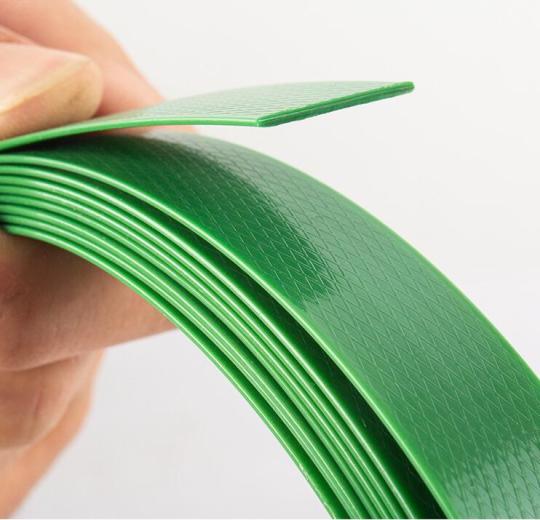
Polyester (PET) Strapping:
Strength: Generally stronger and more durable than polypropylene. It has high tensile strength, making it suitable for heavy-duty applications.
Elasticity: More elastic, which allows it to handle expansion and contraction of the load without breaking.
UV Resistance: More resistant to UV degradation, which makes it suitable for outdoor use.

Polypropylene (PP) Strapping:
Strength: Typically less strong compared to polyester. It’s better suited for lighter loads and less demanding applications.
Elasticity: Less elastic, which can make it more prone to breaking under stress if not used correctly.
UV Resistance: Less resistant to UV light, so it may degrade faster if exposed to sunlight.
2. Usage
Polyester (PET) Strapping:
Applications: Ideal for securing heavy loads, including palletized goods and items with irregular shapes. Commonly used in industries like construction, steel, and manufacturing.
Temperature Range: Performs well in a wide range of temperatures, making it versatile for various environments.
Polypropylene (PP) Strapping:
Applications: Suitable for lighter to medium-weight applications, such as carton bundling and small package securing. Often used in the packaging industry and for securing consumer goods.
Temperature Range: Less effective in extreme temperatures compared to polyester.
3. Cost
Polyester (PET) Strapping:
Cost: Typically more expensive due to its higher strength and durability. However, the long-term performance can justify the higher cost.
Polypropylene (PP) Strapping:
Cost: Generally more cost-effective and budget-friendly, making it a good choice for lower-cost applications where extreme strength is not required.
4. Environmental Impact
Polyester (PET) Strapping:
Recyclability: Polyester is recyclable and can be repurposed into other products, which is beneficial for sustainability.
Polypropylene (PP) Strapping:
Recyclability: Polypropylene is also recyclable, but it may not be as widely accepted in recycling programs as polyester.
5. Ease of Use
Polyester (PET) Strapping:
Handling: Can be more difficult to handle and requires specialized equipment for tensioning and sealing.
Polypropylene (PP) Strapping:
Handling: Generally easier to handle and work with, and can often be used with simpler tools.
In summary, polyester strapping is preferred for heavy-duty, high-stress applications due to its strength and durability, while polypropylene strapping is suitable for lighter, cost-effective packaging needs.
#pp strapping#strapping#packing strap#plastic strap#pet strap#pet strapping#polypropylene strapping#polypropylene strap#polyester strap
0 notes
Text
What is the use of Polypropylene strapping machine?


A Polypropylene strapping machine, also known as a PP strapping machine, is a device used to automate the process of applying polypropylene strapping bands to packages or products. These machines are designed to increase efficiency, consistency, and safety in the strapping process, especially in environments where there's a high volume of packaging or bundling operations. Here are some of the key uses and benefits of Polypropylene strapping machines:
1. Speed and Efficiency:
Automated Operation: Strapping machines can significantly speed up the strapping process compared to manual methods.
Consistent Tensioning: Machines ensure consistent tensioning of the strapping bands, resulting in uniform and secure bundling of packages.
2. Increased Productivity:
Higher Throughput: By automating the strapping process, these machines can handle a larger volume of packages in a shorter amount of time.
Reduced Labor Costs: With less reliance on manual labor, companies can save on labor costs and allocate resources more efficiently.
3. Improved Safety:
Reduced Risk of Injury: Automation reduces the need for manual handling of heavy strapping tools, minimizing the risk of repetitive strain injuries and accidents.
Safer Working Environment: By removing the need for manual tensioning and sealing of strapping bands, these machines contribute to a safer workplace.
4. Consistency and Quality:
Uniform Strapping: Machines ensure consistent tensioning and sealing of strapping bands, resulting in uniformly secured packages.
Reduced Material Waste: Precise control over strapping tension helps minimize material waste by avoiding over-tensioning or under-tensioning of the strapping bands.
5. Versatility:
Adjustable Settings: Many strapping machines offer adjustable settings for strap tension, sealing temperature (if applicable), and other parameters to accommodate various package sizes and types.
Compatibility: Polypropylene strapping machines are compatible with different widths and thicknesses of PP strapping bands, allowing flexibility in packaging applications.
6. Integration and Automation:
Integration with Packaging Lines: These machines can be integrated into existing packaging lines for seamless automation of the strapping process.
Advanced Features: Some models may offer advanced features such as automatic strap feeding, tension adjustment, and seal initiation, further streamlining the packaging workflow.
In summary, Polypropylene strapping machines offer significant advantages in terms of speed, efficiency, safety, and consistency in the packaging and bundling process. They are essential tools for businesses looking to streamline their packaging operations and improve overall productivity.
0 notes
Text

What type of adhesive is Bopp?
Bopp adhesive refers to a type of adhesive used with BOPP (Biaxially Oriented Polypropylene) films. These films are widely used in packaging applications due to their clarity, strength, and resistance to moisture and chemicals. The adhesives used with BOPP films can vary depending on the specific application, but they generally fall into a few main categories:
Water-Based Acrylic Adhesives: These adhesives are environmentally friendly and offer good adhesion properties. They are commonly used for labels and tapes that require a clear and strong bond.
Hot Melt Adhesives: These adhesives are applied in a molten state and solidify upon cooling. They provide a strong bond and are often used in applications where quick adhesion is needed, such as in packaging tapes.
Solvent-Based Adhesives: These adhesives use organic solvents to dissolve the adhesive components. They offer excellent adhesion and durability but are less environmentally friendly due to the release of volatile organic compounds (VOCs).
UV-Curable Adhesives: These adhesives are cured using ultraviolet light, offering fast curing times and strong adhesion. They are used in applications where precision and speed are important.
The choice of adhesive depends on the specific requirements of the application, such as the need for clarity, strength, environmental considerations, and the type of BOPP film being used.
1 note
·
View note
Text
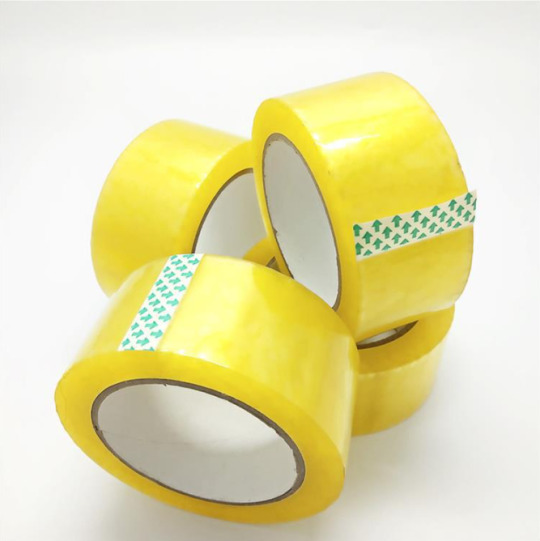
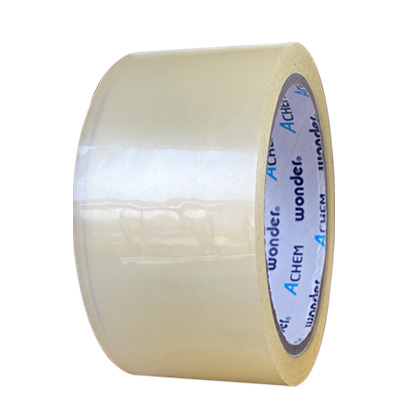
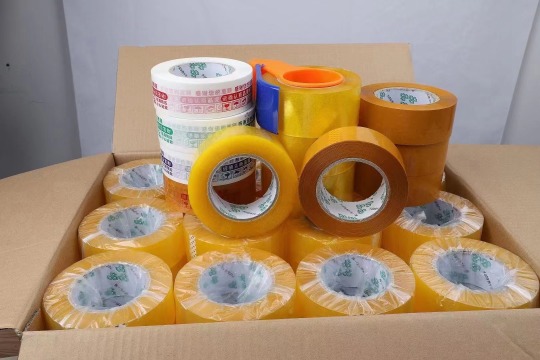
What are the classifications and uses of adhesive tape?
Adhesive Tape comes in a variety of types, each designed for specific applications. Here is a classification of different tapes along with their common uses:
1. Packaging and Sealing Tapes
Packing Tape: Used for sealing boxes and packages for shipping. It typically comes in clear or brown.
Common Uses: Shipping, storage, and moving boxes.
Water-Activated Tape (Gummed Tape): Activated by water and bonds strongly with cardboard.
Common Uses: Sealing heavy or high-value packages, providing tamper-evident security.
2. Adhesive Tapes
Cellophane Tape : A clear, thin tape used for light-duty sealing.
Common Uses: Wrapping gifts, sealing envelopes, light repairs.
Double-Sided Tape: Adhesive on both sides, used for bonding surfaces together.
Common Uses: Mounting photos, attaching posters, crafting.
Duct Tape: Cloth or scrim-backed tape with a strong adhesive, water-resistant.
Common Uses: Heavy-duty repairs, sealing, and waterproofing.
Masking Tape: Easy-to-tear paper tape, used mainly in painting.
Common Uses: Masking off areas during painting, labeling, and bundling.
3. Electrical and Electronic Tapes
Electrical Tape: Made from vinyl, used for insulating electrical wires.
Common Uses: Insulating wires, color-coding cables, minor electrical repairs.
Kapton Tape: Polyimide tape used for high-temperature and electrical insulation.
Common Uses: Electronics manufacturing, aerospace applications.
Copper Tape: Conductive tape used for electrical connections and shielding.
Common Uses: EMI shielding, circuit repairs, and antennae manufacturing.
4. Specialty Tapes
Gaffer Tape: Cloth tape with a matte finish, easily removable without residue.
Common Uses: Securing cables, stage and film production, temporary repairs.
Teflon Tape (PTFE Tape): Used in plumbing to seal pipe threads.
Common Uses: Plumbing, preventing leaks in threaded connections.
Anti-Slip Tape: Textured tape that provides traction on slippery surfaces.
Common Uses: Stairs, walkways, ramps, and industrial equipment.
VHB Tape (Very High Bond Tape): High-strength bonding tape used in place of mechanical fasteners.
Common Uses: Automotive assembly, construction, electronics.
5. Medical Tapes
Surgical Tape: Used to secure dressings and bandages.
Common Uses: Medical dressings, securing IV lines, wound care.
Micropore Tape: Breathable tape used for delicate skin.
Common Uses: Wound care, securing lightweight dressings, skin protection.
6. Decorative and Craft Tapes
Washi Tape: Decorative paper tape used for arts and crafts.
Common Uses: Scrapbooking, card making, decorating.
Fabric Tape: Adhesive tape made from fabric.
Common Uses: Hemming, temporary fabric repairs, crafting.
7. Industrial and Construction Tapes
Foil Tape: Aluminum or copper foil backing with an adhesive, used for sealing and insulation.
Common Uses: HVAC duct sealing, insulation, reflective shielding.
Strapping Tape: High tensile strength tape used for bundling and reinforcing.
Common Uses: Securing heavy loads, palletizing, and reinforcing packages.
Conclusion
Different tapes are designed to meet specific needs, whether for everyday household use, industrial applications, or specialized tasks. Understanding the classifications and uses can help in selecting the right tape for the job, ensuring optimal performance and efficiency.
These tapes are integral to many industries and applications, providing essential solutions for a wide range of tasks and challenges.
0 notes
Text

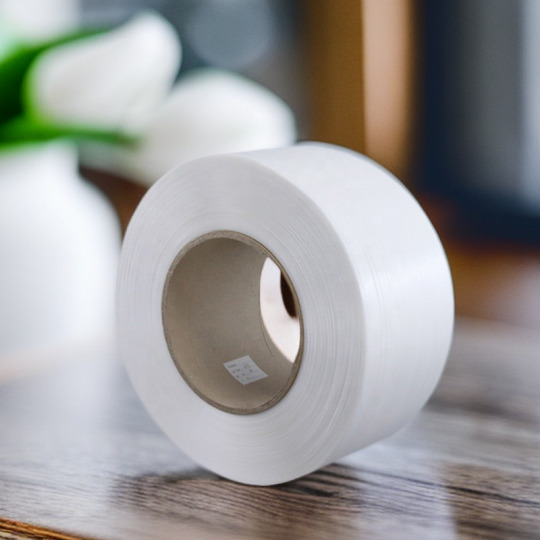
🚀 Unlock the Power of Secure Packaging with PP Strapping! 🚀 Are you looking for a reliable, cost-effective solution for your packaging needs? Look no further than PP strapping! Here’s why polypropylene strapping should be your go-to choice: 🔹 High Strength and Durability: PP strapping is known for its exceptional tensile strength, making it perfect for securing heavy loads and ensuring safe transportation. 🔹 Cost-Effective: Save on packaging costs without compromising on quality. PP strapping offers a high-performance solution at a fraction of the cost of other materials. 🔹 Eco-Friendly: Made from recyclable materials, polypropylene strapping is a sustainable choice for businesses looking to reduce their environmental impact. 🔹 Versatile Applications: Whether you’re in logistics, manufacturing, or retail, PP strapping is versatile enough to meet all your packaging needs. 🔹 Easy to Use: Our PP strapping is designed for both manual and automatic strapping machines, making it incredibly user-friendly. 💬 We Want to Hear From You! Have questions or need advice on the best strapping solution for your business? Drop us a comment below or send us a direct message. Our team is here to help! 🔗 Shop Now: https://www.alibaba.com/product-detail/Yongsheng-factory-wholesale-custom-black-polypropylene_62430816768.html?spm=a2747.product_manager.0.0.9c0871d2RKZb8R
PackagingSolutions #PPStrapping #PolypropyleneStrapping #EcoFriendly #CostEffective #Logistics #Manufacturing
0 notes
Text

What is the strength of a PET strap?
The strength of a PET (Polyethylene Terephthalate) strap is typically measured in terms of its tensile strength, which is the maximum amount of tensile stress it can withstand before breaking. This strength can vary depending on the specific type and size of the PET strap, as well as the manufacturing process and material quality. Generally, PET straps have high tensile strength, making them suitable for securing heavy loads.
Tensile Strength Range
Standard PET Straps: The tensile strength of standard PET straps generally ranges from 200 to 600 kgf (kilogram-force).
Heavy-Duty PET Straps: For heavy-duty applications, the tensile strength can exceed 1000 kgf.
Factors Influencing Strength
Strap Width and Thickness: Wider and thicker straps generally have higher tensile strength.
Manufacturing Quality: High-quality production processes and materials result in stronger straps.
Orientation Process: Proper stretching and heat-setting during manufacturing increase the strength by aligning the polymer chains.
Embossing and Surface Treatment: Surface treatments can enhance grip and performance but may slightly affect tensile strength.
Typical Applications Based on Strength
Light to Medium Loads: PET straps with tensile strength around 200-400 kgf are used for bundling lightweight to medium-weight items such as boxes, cartons, and smaller pallets.
Heavy Loads: Straps with tensile strength of 400-600 kgf are suitable for heavier loads, including larger pallets and crates.
Very Heavy Loads: For extremely heavy loads, such as in construction or industrial applications, PET straps with tensile strength above 600 kgf are used.
Comparative Strength
Compared to other strapping materials:
Polypropylene (PP) Straps: PET straps are generally stronger than PP straps, which have tensile strengths typically in the range of 100-300 kgf.
Steel Straps: While PET straps are strong, steel straps can have higher tensile strength, often exceeding 1500 kgf, but PET offers advantages in terms of weight, flexibility, and safety.
Example
A typical 16 mm wide and 0.8 mm thick PET strap might have a tensile strength of around 450 kgf, making it suitable for securing heavy pallets in shipping and logistics.
Summary
PET straps are known for their high tensile strength, which typically ranges from 200 to over 1000 kgf, depending on their size, quality, and manufacturing process. This strength makes them ideal for securing a wide range of loads, from lightweight packages to very heavy industrial items.
0 notes
Text
How thick is the PP strapping?


The thickness of PP (polypropylene) strapping can vary depending on the specific application and requirements. PP strapping is available in various thicknesses, typically ranging from about 0.5 millimeters (0.02 inches) to 1.3 millimeters (0.05 inches) or more. Thinner strapping is suitable for lighter loads or bundling purposes, while thicker strapping is used for heavier loads or securing pallets. The choice of thickness depends on factors such as the weight and size of the items being strapped, the method of application, and the level of tension needed to secure the load effectively.
#pp strapping#strapping#plastic strap#packaging#pp strapping roll#packaging materials#pp strap#packing strap#packing belt
1 note
·
View note
Text

What is the raw material of PP strapping roll?
The raw material of PP (Polypropylene) strapping rolls is polypropylene resin. Polypropylene is a type of thermoplastic polymer that is commonly used in various applications due to its excellent properties, including high tensile strength, good flexibility, chemical resistance, and low cost.
In the production process of PP strapping rolls, the polypropylene resin is typically melted and extruded through a die to form long, continuous straps. These straps are then cooled and wound into rolls, ready for use in various packaging and bundling applications. Depending on the specific requirements, additives such as stabilizers, colorants, or UV inhibitors may also be incorporated into the polypropylene resin to enhance the performance or appearance of the strapping rolls.
0 notes
Text
What is PP strap made of?

PP strap, also known as polypropylene strap, is made from polypropylene, which is a thermoplastic polymer. Polypropylene is derived from the propylene monomer and is widely used in various industries due to its excellent combination of properties, including:
High Tensile Strength: Polypropylene has good tensile strength, making it suitable for use as a strapping material to secure and bundle items together. Lightweight: PP strap is lightweight, which makes handling and transporting packaged goods more manageable. Resistance to Chemicals and Moisture: Polypropylene is resistant to many chemicals and moisture, making it suitable for use in various environmental conditions. Flexibility: PP strap is flexible and can conform to the shape of the packaged items, providing secure bundling without causing damage. Cost-Effective: Polypropylene is a cost-effective material compared to other types of strapping materials, making it a popular choice for packaging applications. Overall, PP strap is valued for its strength, versatility, and affordability, making it a common choice for securing and bundling items in industries such as logistics, shipping, and manufacturing.
0 notes
Text
What is strapping in packaging?

In packaging, strapping refers to the process of securing or bundling items together using straps, bands, or tapes made of materials such as plastic, metal, or composite materials. These straps are commonly referred to as strapping bands or strapping tapes.
Strapping serves several purposes in packaging:
Securing Items: Strapping is used to securely hold items together, preventing them from shifting or moving during storage or transportation. Bundling: It is used to bundle multiple items together into a single unit, making handling and transport more efficient. Reinforcement: Strapping adds strength and stability to packages, particularly for heavy or bulky items, reducing the risk of damage during handling and transit. Tamper-Evidence: In some cases, strapping can also serve as a tamper-evident seal, providing visual indication if a package has been opened or tampered with. Strapping materials come in various forms, including polypropylene (plastic) straps, polyester straps, steel straps, and composite straps. The choice of strapping material depends on factors such as the weight and size of the items being packaged, the level of security required, and the specific application.
#strapping#packaging#plastic strap#packing strap#packing belt#pp strap#packaging materials#Logistics Packaging
0 notes